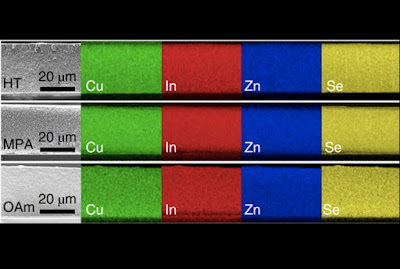Topics: Green Tech, Nanotechnology, Quantum Mechanics, Solar Cells
Semiconducting nanocrystals called colloidal quantum dots (CQDs) are ideal for applications such as large-panel displays and photovoltaic cells thanks to their high efficiency and colour purity. Their main drawback is their toxicity, since they have traditionally been made from cadmium or other heavy metals, such as lead. Researchers at the Los Alamos National Laboratory in the US have now engineered cadmium-free QD solar cells that reach efficiencies on par with those of their environmentally-unfriendly counterparts. The key to the new devices’ high performance is their tolerance to defects, they say.
CQDs can be synthesized in solution, which means that films of these nanocrystals can be deposited quickly and easily on a range of flexible or rigid substrates – just like paint or ink. Such semiconducting nanocrystals are ideal for making highly-efficient inorganic solar cells that emit light via a process known as radiative recombination. Here, an electron in the valency energy band in the QD absorbs a photon and moves to the conduction band, leaving behind an electron vacancy, or hole. The excited electron and hole then recombine, releasing a photon.
The advantage of using CQDs as photovoltaic materials in solar cells is that they absorb light over a broad spectrum of solar radiation wavelengths. This is because the band gap of a CQD can be tuned over a large energy range by simply changing the size of the nanocrystals. Such a size-tuneable property has allowed the efficiencies of these QDs to rapidly approach those of traditional thin-film photovoltaics, such as PbS, CdTe and Pb-halide perovskite QDs.
Quantum dot solar cells get greener, Isabelle Dumé, Physics World

Comments